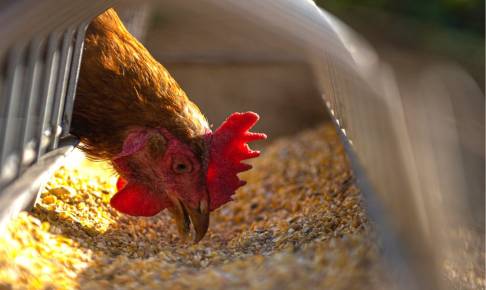ELISA test kit for the quantitation of patulin in juices, cider, and purees
Background
The presence of toxic chemical contaminants in food, particularly those intended for children's consumption, is a matter of great concern to consumers and health authorities. Mycotoxins in food, animal feed, and beverages have been recognized as a potential threat to human and animal health, either caused by direct contamination of plant materials and their byproducts, or by the transfer of said mycotoxins and their metabolites to animal tissues, milk, and eggs as a consequence of the ingestion of contaminated food. Due to the extreme difficulty of avoiding their presence, mycotoxins also pose high economic cost to the agri-food sector that annually represents the loss of millions of dollars worldwide.
Mycotoxin contamination is consider an unpredictable problem, even when good agricultural, storage, and processing practices are implemented, posing a difficult challenge to ensure the safety of food and feed. Many mycotoxins are not easily removed during food processing due to their physical and chemical stability. The main mycotoxin-producing fungi belong to the genera Aspergillus, Penicillium, Fusarium, and Alternaria. So far, more than 400 mycotoxins with great structural diversity have been identified. The most relevant, due to their incidence and/or toxicity, are aflatoxins, ochratoxins, patulin, fumonisins, deoxynivalenol, zearalenone, T-2, and alternariol. National and international public health authorities have adopted strict regulatory guidelines aimed at controlling the presence of the main classes of mycotoxins in food and feed.
Figure 1: Patulin, [4-hydroxy-4H-furo[3.2c] pyran-2(6H)-one].
Patulin [4-hydroxy-4H-furo[3.2c]pyran-2(6H)-one] (Figure 1) is a toxic polyketide metabolite produced mainly by Penicillium expansum. Although it can occur in infected fruits, grains, and other foods, the main route of exposure to patulin is through the ingestion of infected apples and some of its derivatives, such as juices and compotes. The Joint FAO/WHO (Food and Agriculture Organization of the United Nations/World Health Organization) Committee of Experts on Food Additives (JECFA) established in 1995 a provisional maximum tolerable daily intake (PMTDI) for patulin of 0.4 μg/kg of body weight/day. Based on this recommendation, the European Union has established maximum allowed levels of patulin of 50 µg/kg for juices, 25 µg/kg for apples, and 10 µg/kg for foodstuffs intended for children consumption (European Commission Regulation 1881/2006).
Other national bodies, such as the United States Food and Drug Administration (FDA 2004), the Ministry of Health of the People's Republic of China (CFDA 2011), the Ministry of Health of Canada (Health Canada 2014), have adopted similar criteria. Brazil only regulates apple juice (Ministerio da Saude do Brazil 2011).
Various international studies on the incidence of patulin in apples and apple-derived products show that a very high percentage of the samples analyzed contained detectable concentrations of patulin. In many cases, those levels are close to the established limit, and occasionally exceedances are reported (Erdoğan et al. 2018; Pallarés et al. 2019). More importantly, there have been a series of alerts and product recalls in recent years due to the presence of excessive
Download content now





















